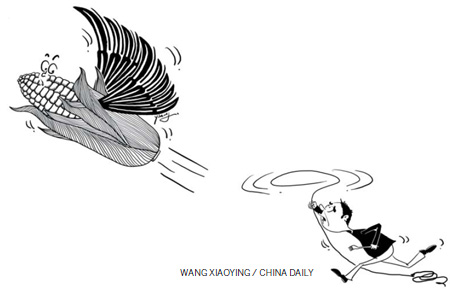Preventing another food crisis

Food prices are soaring to new highs only three years after the 2007-08 food crisis. The international prices of wheat, for example, increased by 85 percent between June 2010 and January 2011. Domestic food prices are also rising in many countries. In China, food inflation rose 10 percent between December 2009 and December 2010, driven mainly by higher prices for meat, dairy, vegetables and fruits.
Global food prices are being pushed up by some of the same factors that lead to the food crisis of 2007-08 - expanding biofuel production, rising oil prices, US dollar depreciation, export restrictions, and panic purchases. However, today's world food situation is quite different in some important ways. Overall food production and grain stocks in developing countries are still plentiful, and the international price of rice, the main staple in Asia, has not increased that much compared to three years ago.
There are concerns about new production shocks due to extreme weather events, such as the recent drought in Northern China. But, while the drought could lead to production shortfalls of wheat, the major winter crop in the region, it is not likely to push prices higher. China has sufficient wheat stocks and the government has taken some important steps to alleviate the impact of the drought and to secure wheat supplies.















